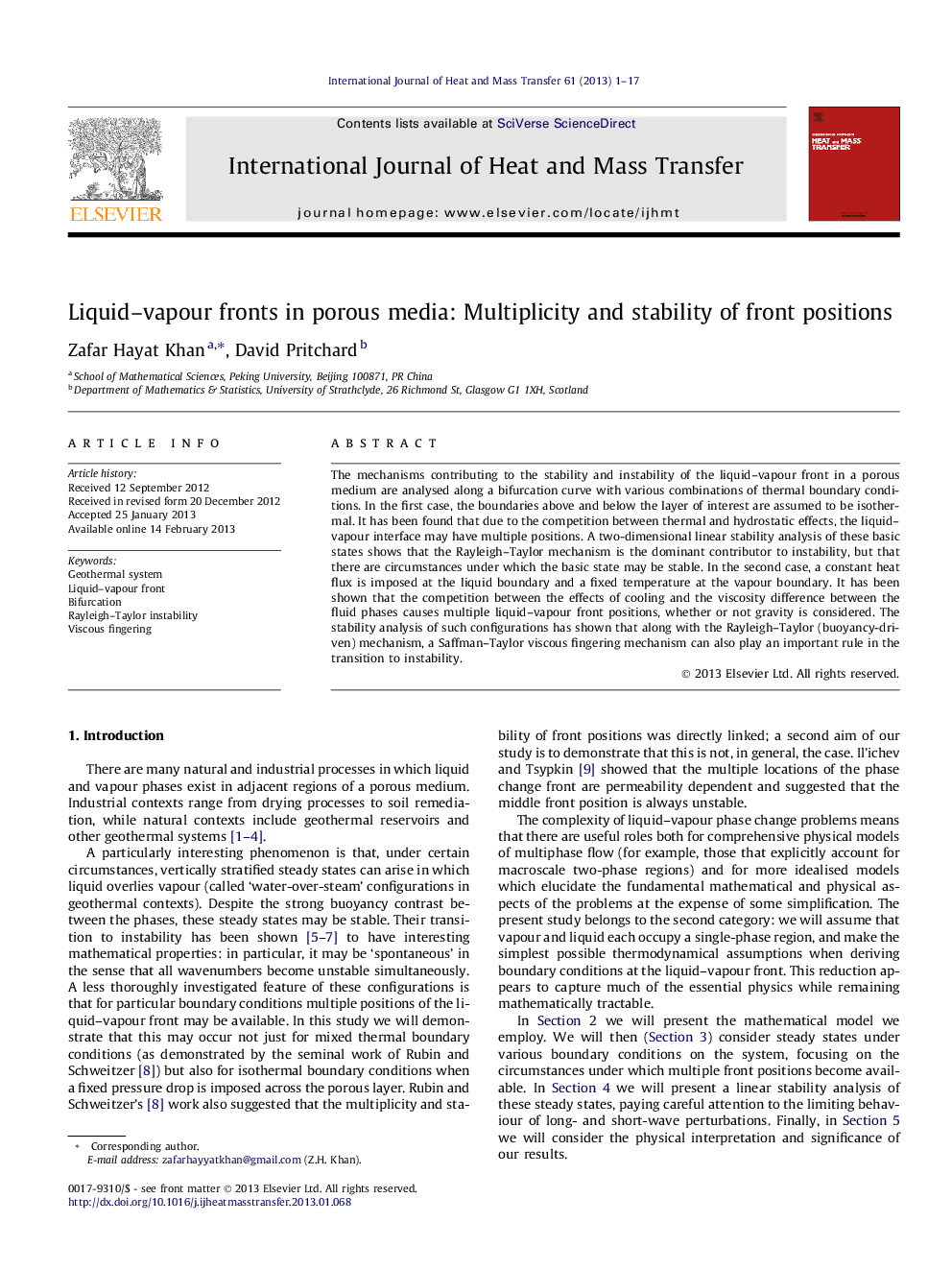| Article ID | Journal | Published Year | Pages | File Type |
|---|---|---|---|---|
| 7058893 | International Journal of Heat and Mass Transfer | 2013 | 17 Pages |
Abstract
The mechanisms contributing to the stability and instability of the liquid-vapour front in a porous medium are analysed along a bifurcation curve with various combinations of thermal boundary conditions. In the first case, the boundaries above and below the layer of interest are assumed to be isothermal. It has been found that due to the competition between thermal and hydrostatic effects, the liquid-vapour interface may have multiple positions. A two-dimensional linear stability analysis of these basic states shows that the Rayleigh-Taylor mechanism is the dominant contributor to instability, but that there are circumstances under which the basic state may be stable. In the second case, a constant heat flux is imposed at the liquid boundary and a fixed temperature at the vapour boundary. It has been shown that the competition between the effects of cooling and the viscosity difference between the fluid phases causes multiple liquid-vapour front positions, whether or not gravity is considered. The stability analysis of such configurations has shown that along with the Rayleigh-Taylor (buoyancy-driven) mechanism, a Saffman-Taylor viscous fingering mechanism can also play an important rule in the transition to instability.
Related Topics
Physical Sciences and Engineering
Chemical Engineering
Fluid Flow and Transfer Processes
Authors
Zafar Hayat Khan, David Pritchard,
